This lamb & beef kofta Kebab recipe is the real deal! Not only is the taste spot on, but the kebabs are tender, juicy, and just as good as those served at your favorite Middle Eastern restaurant. Serve them with Lebanese Mujadara, and plenty of sumac powder!
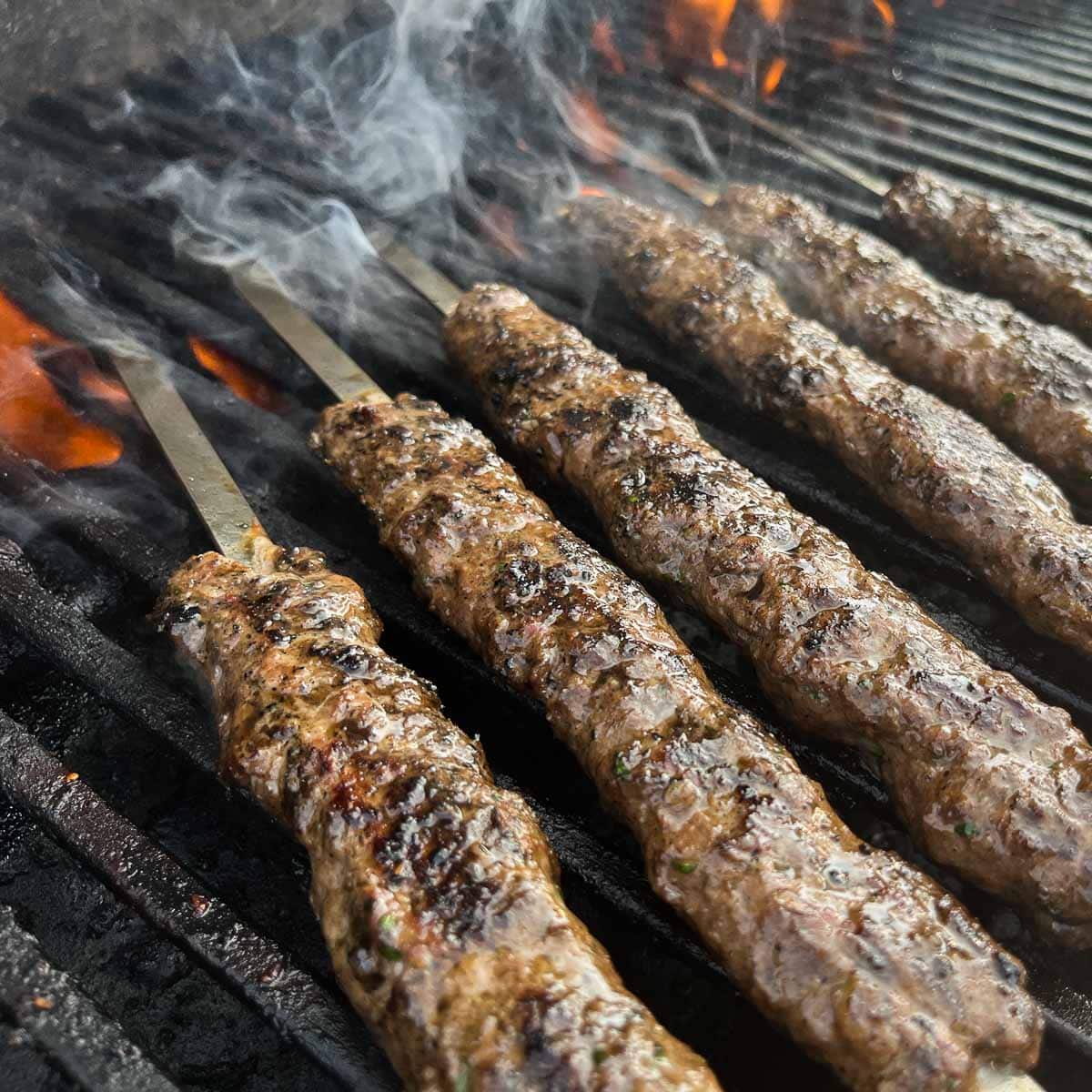
Ground lamb or beef kofta kabobs are referred to as Luleh or Lula Kabob in the Middle East. The word kofta (also spelled kafta and kefta) means ground meat. The word also describes these mouth-watering and perfectly seasoned ground lamb or beef kafta kabobs.
Today, there are many kabob variations, including fruit kabobs, veggie kabobs, and even dessert kabobs. However, there was a time when the word kabob simply referred to skewered meat or shish kabobs.
This beef kofta kebab recipe yields tender, juicy kebabs that you will absolutely love!
😍 Why You'll Love This Recipe
- This kofta kebab recipe tastes just as good whether you use lamb or beef. It's even amazing with goat meat!
- The beef kofta kebabs can be served with a salad as a low-carb option but also go great with baghali polo and torshi.
- Lamb or beef kofta kebab are great for meal prepping and make great leftovers.
- Beef kofta kebabs also freeze really well!
🛒 What You Need For This Recipe
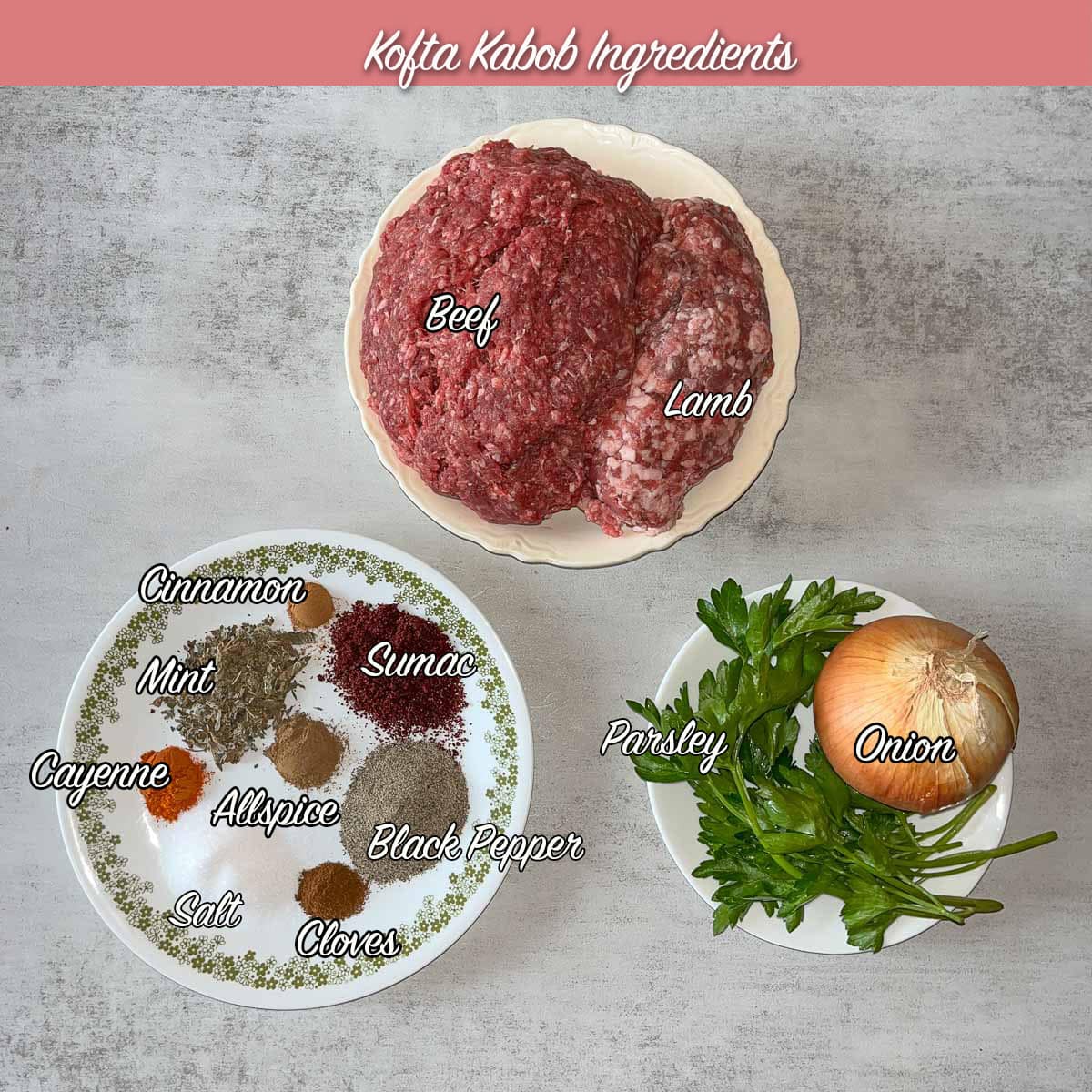
🔖 Ingredients & Substitutions
- Meat: For this kofta kebab recipe, you will need ground beef, lamb, or a combination of the two. However, just stay away from lean ground beef. Make sure to use meat with a high-fat content (around 20%) so that the kofta kebabs can be nice and tender.
- Herbs: I prefer using fresh parsley, but if you have to you can use dried parsley. The same goes for mint, if you have fresh, use that, otherwise, you can substitute dried mint.
- Spices: Some beef kebab recipes call for just salt and black pepper while others use pre-packaged Middle Eastern spices. I like my Kabobs with a lot more flavor. My spice blend includes sumac powder, allspice, cloves, cinnamon, a pinch of cayenne pepper, and of course, salt and black pepper. Another option is this Mediterranean lamb seasoning!
🥩 How to Make Beef Kofta Kebabs
Step 1: Place the chopped onion and parsley in a food processor. Pulse the food processor until finely ground. Strain the onion juice from the onion mixture and set it aside for later.
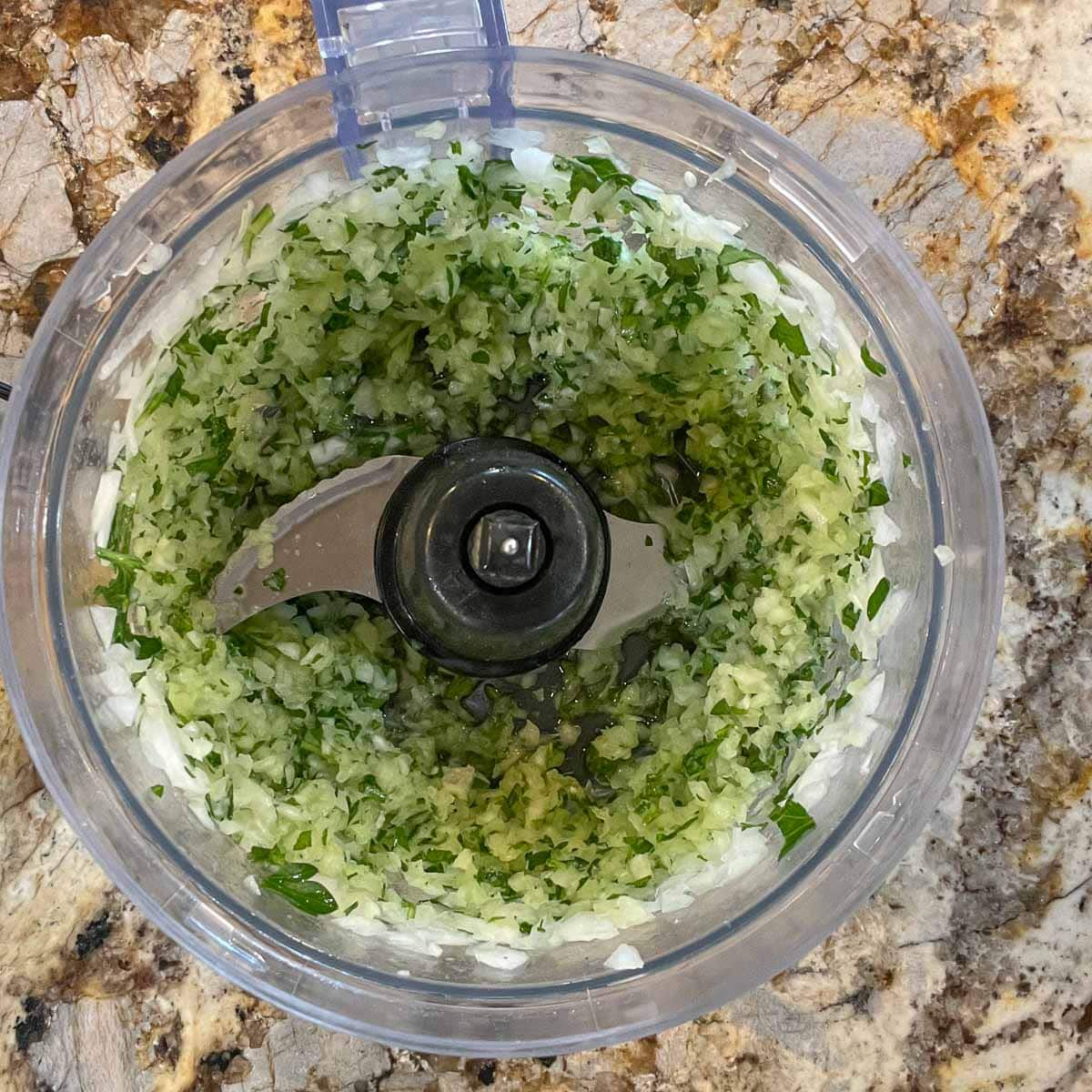
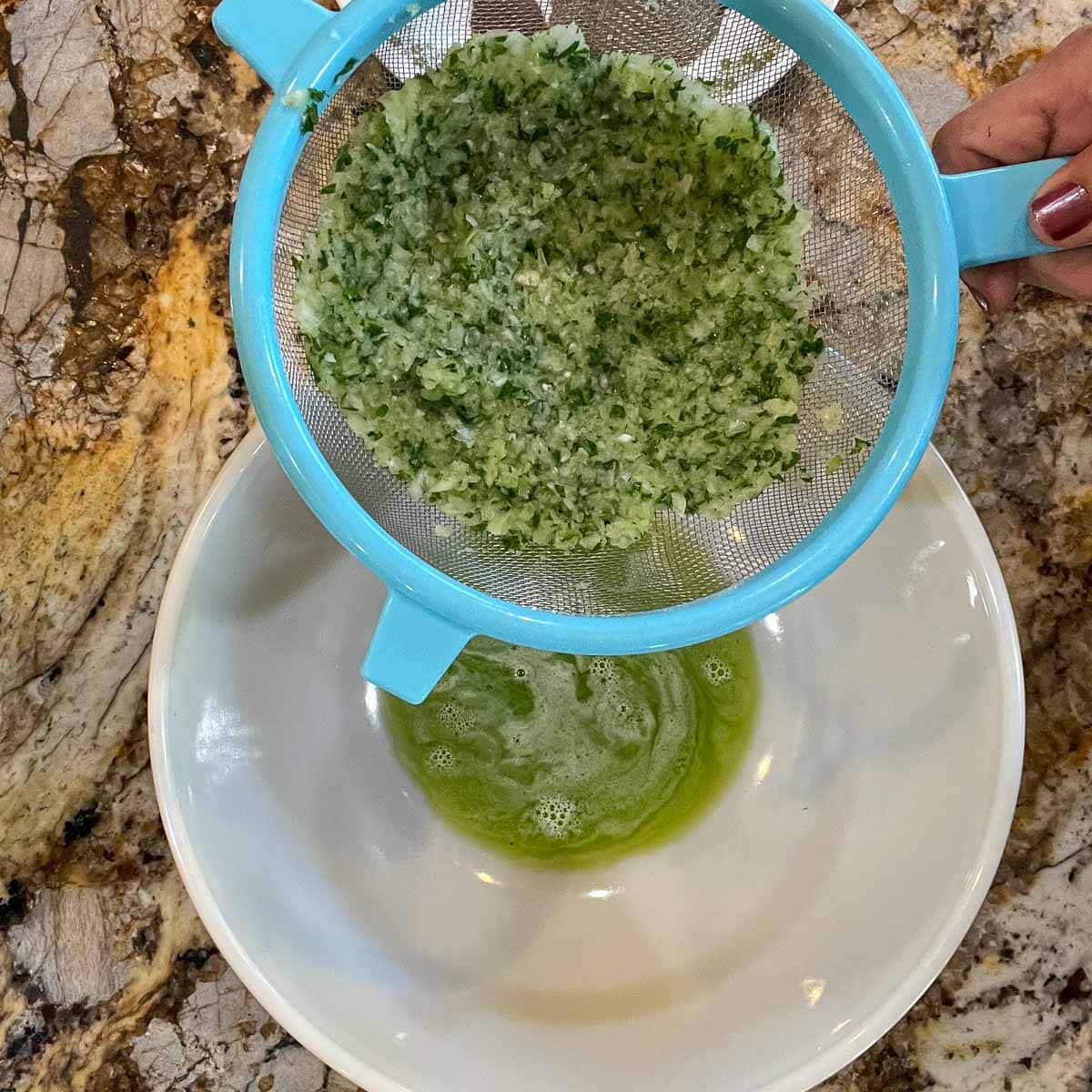
Step 2: Add beef and lamb to a large bowl. Top with the ground onions, and season with salt, black pepper, sumac powder, allspice, cloves, cinnamon, and cayenne.
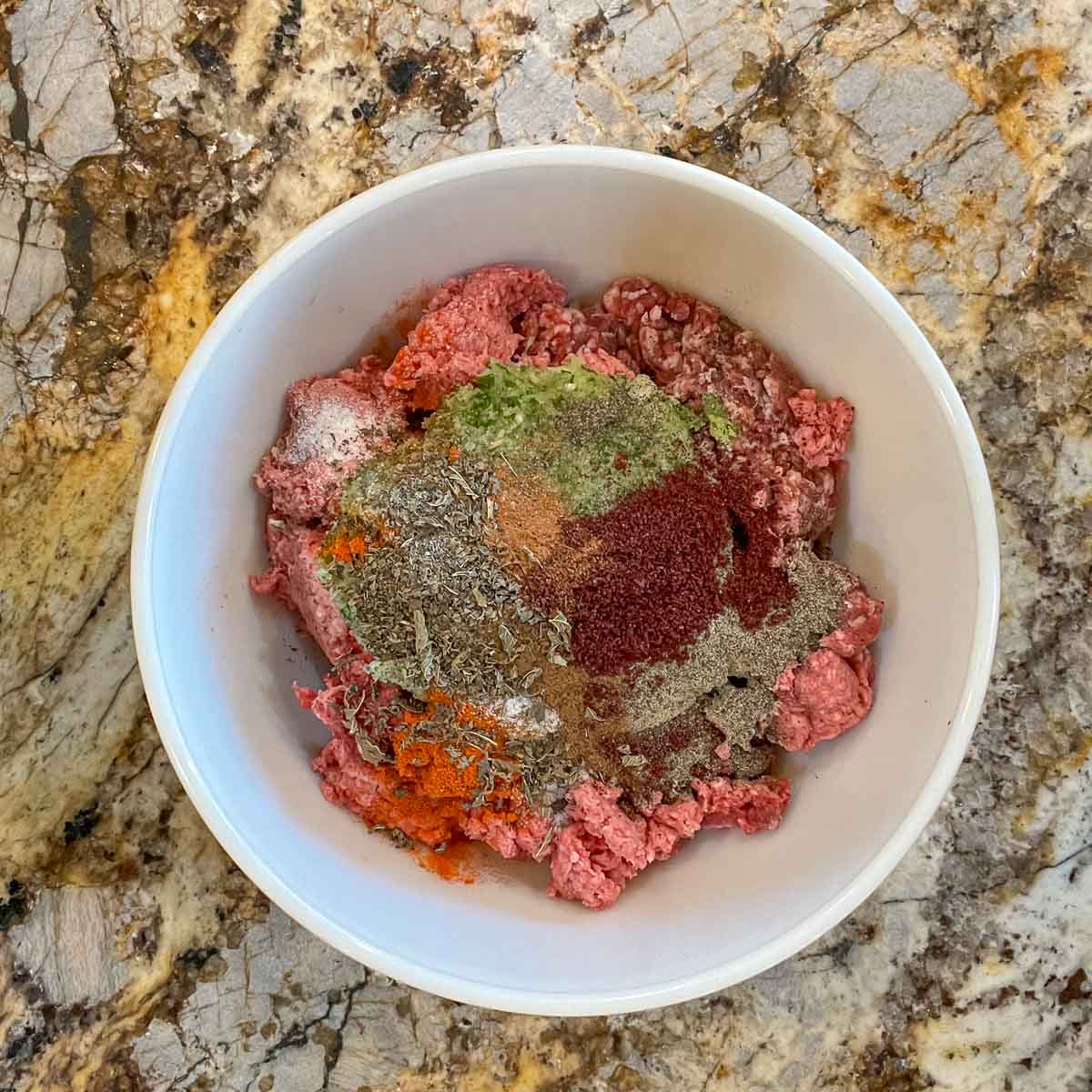
Step 3: Cover the bowl with plastic wrap and refrigerate for 4-6 hours, or overnight. When you're ready, take a handful of the kafta mixture and roll it into a log. Push a flat skewer through it and form the meat over the skewer.
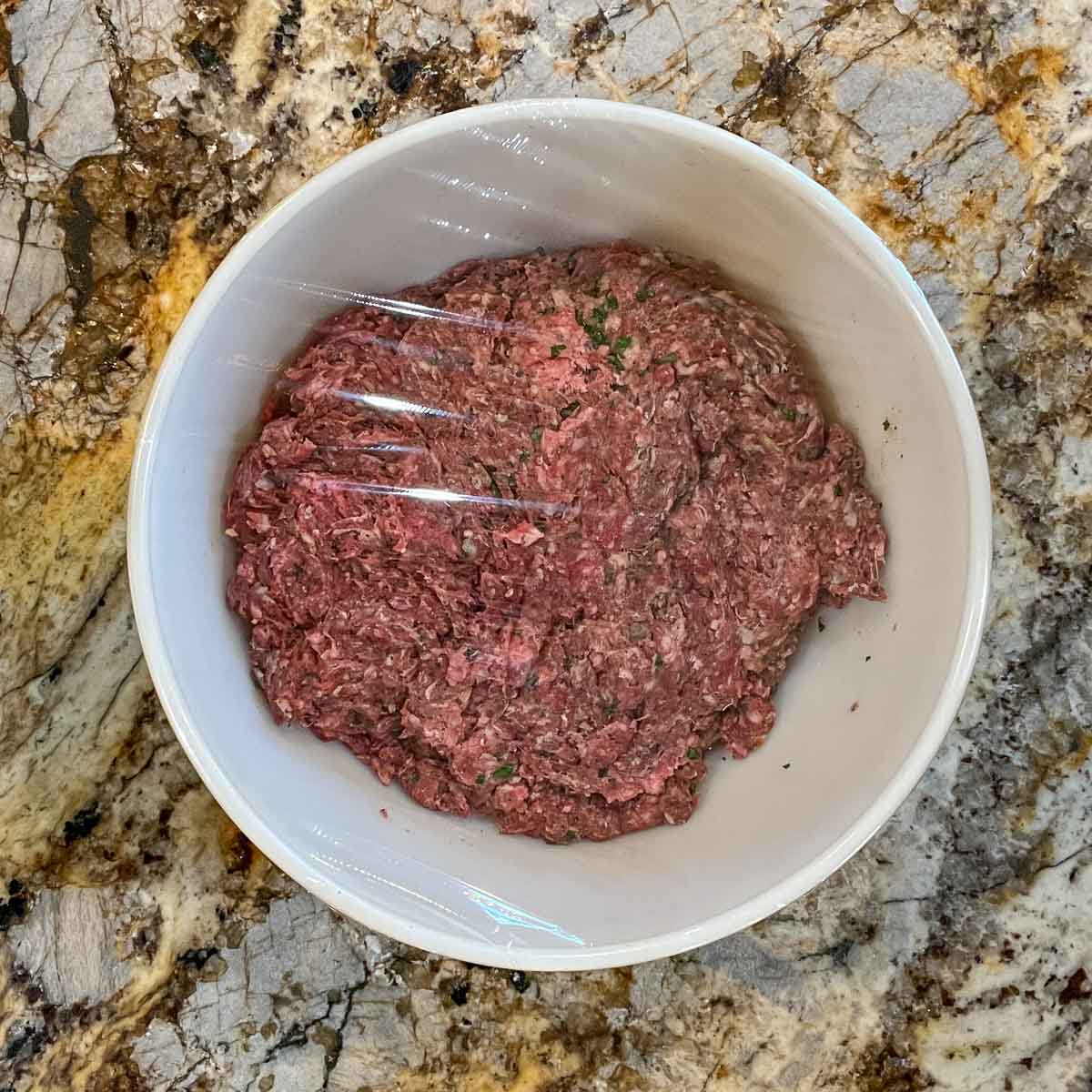
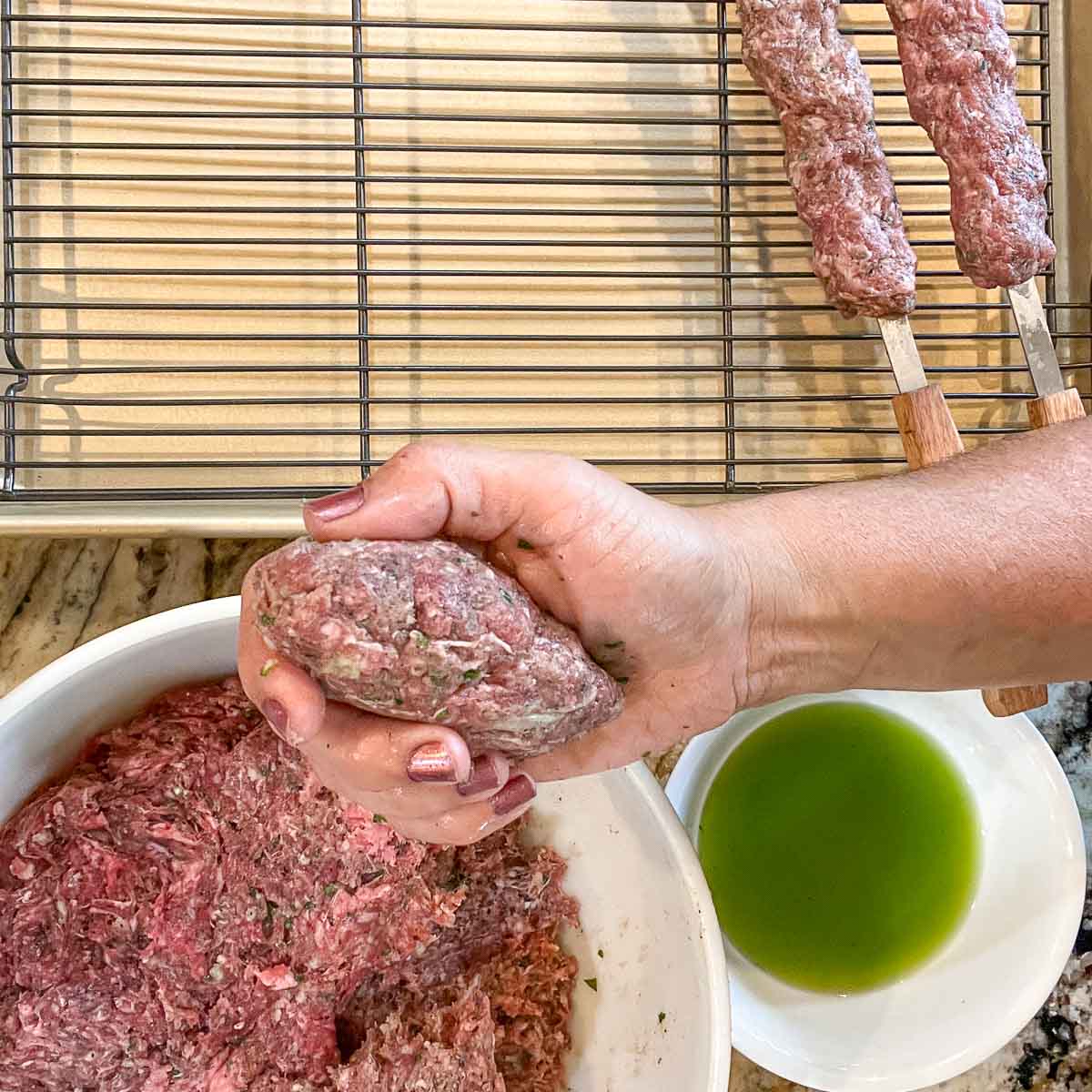
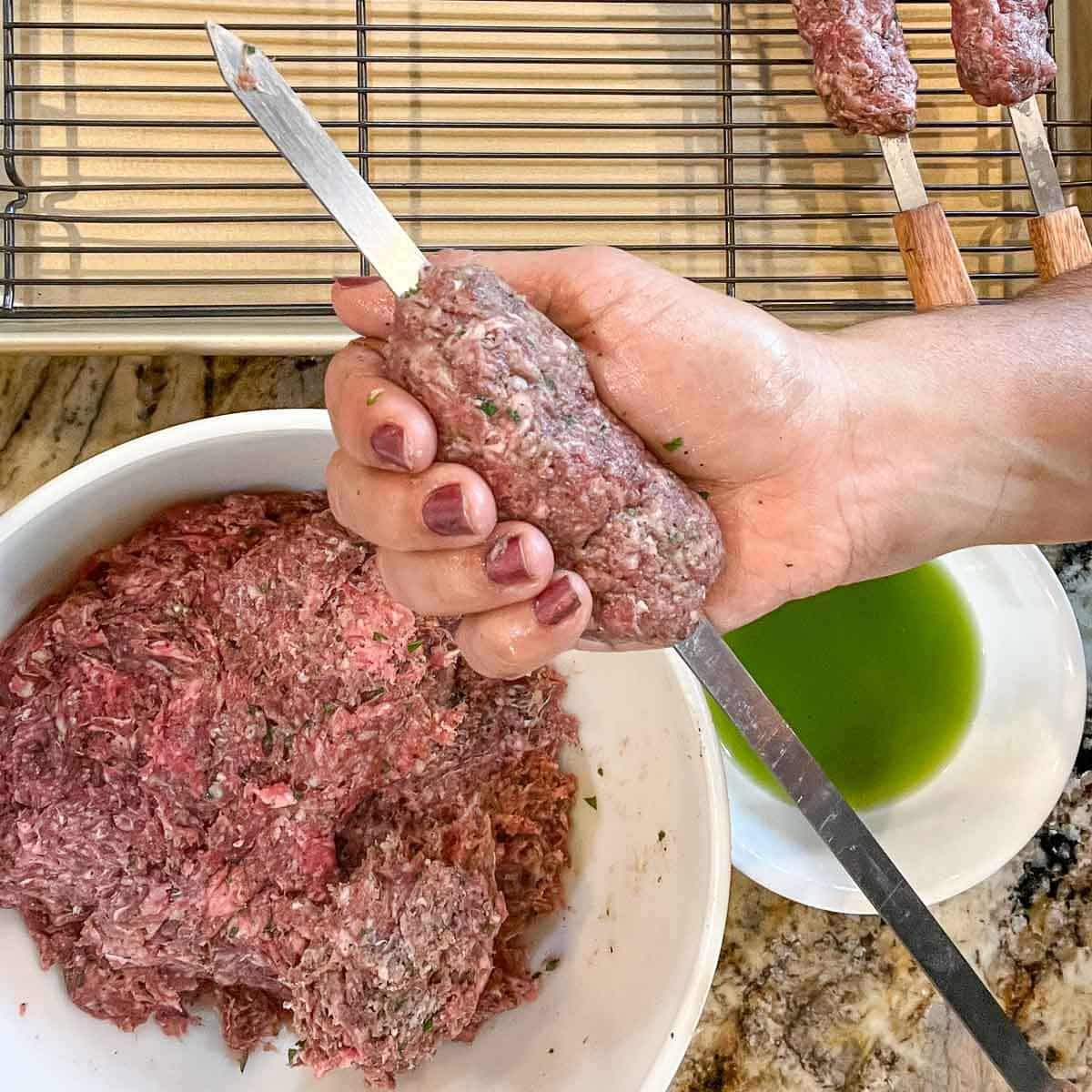
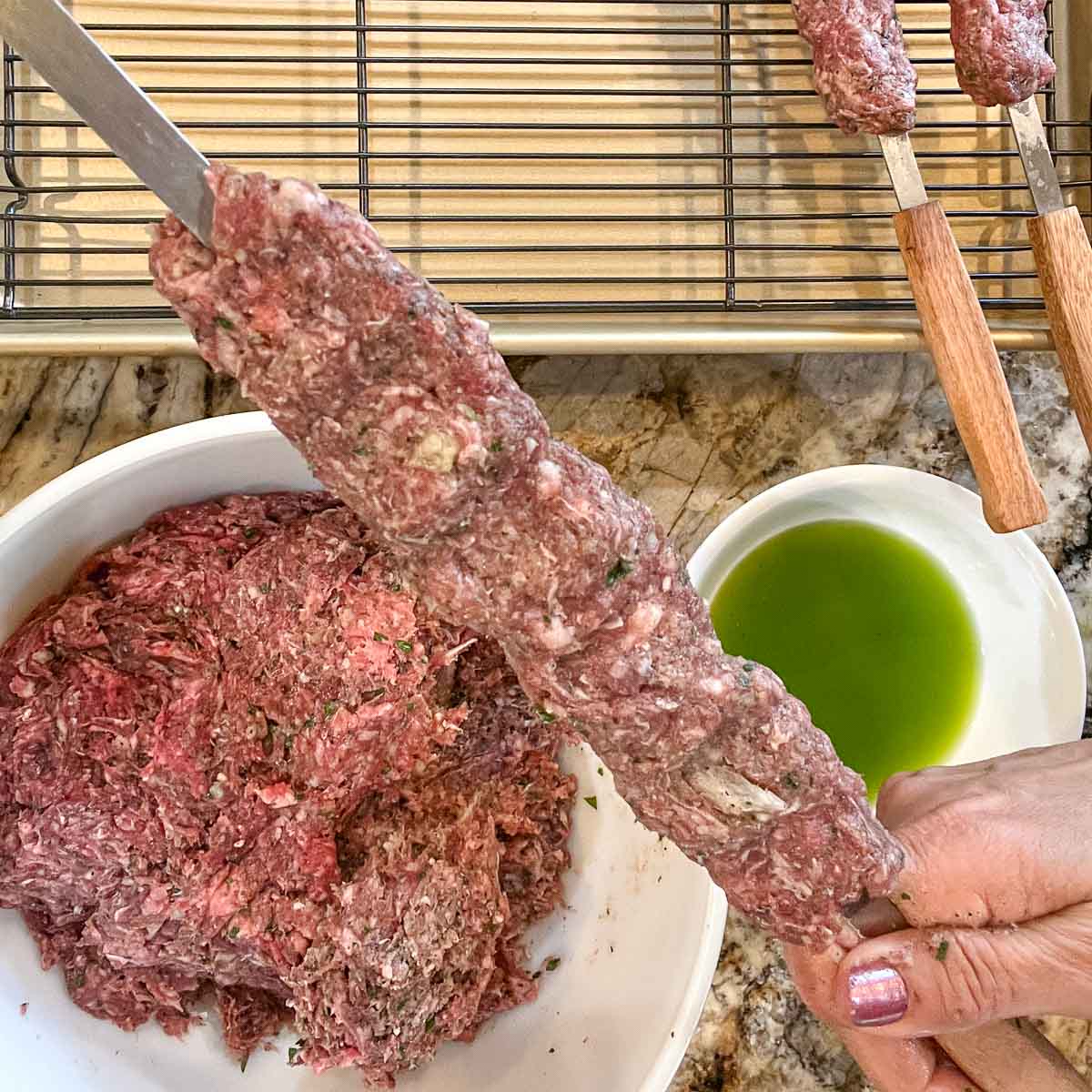
Pro Tip: Wetting your hands with the onion and parsley juice will not only flavor the kabobs but will keep them from sticking to your hands. If you prefer, you can use cold water instead.
Would you like to save this recipe?
Koft Kebab Grilling Instructions
Heat and oil the grill to keep the kabobs from sticking to the grates. Gently place the skewers on the grill and turn them over every minute or so to keep them from sticking. Cook for 3 to 4 minutes per side. Don't overcook or they will dry out.
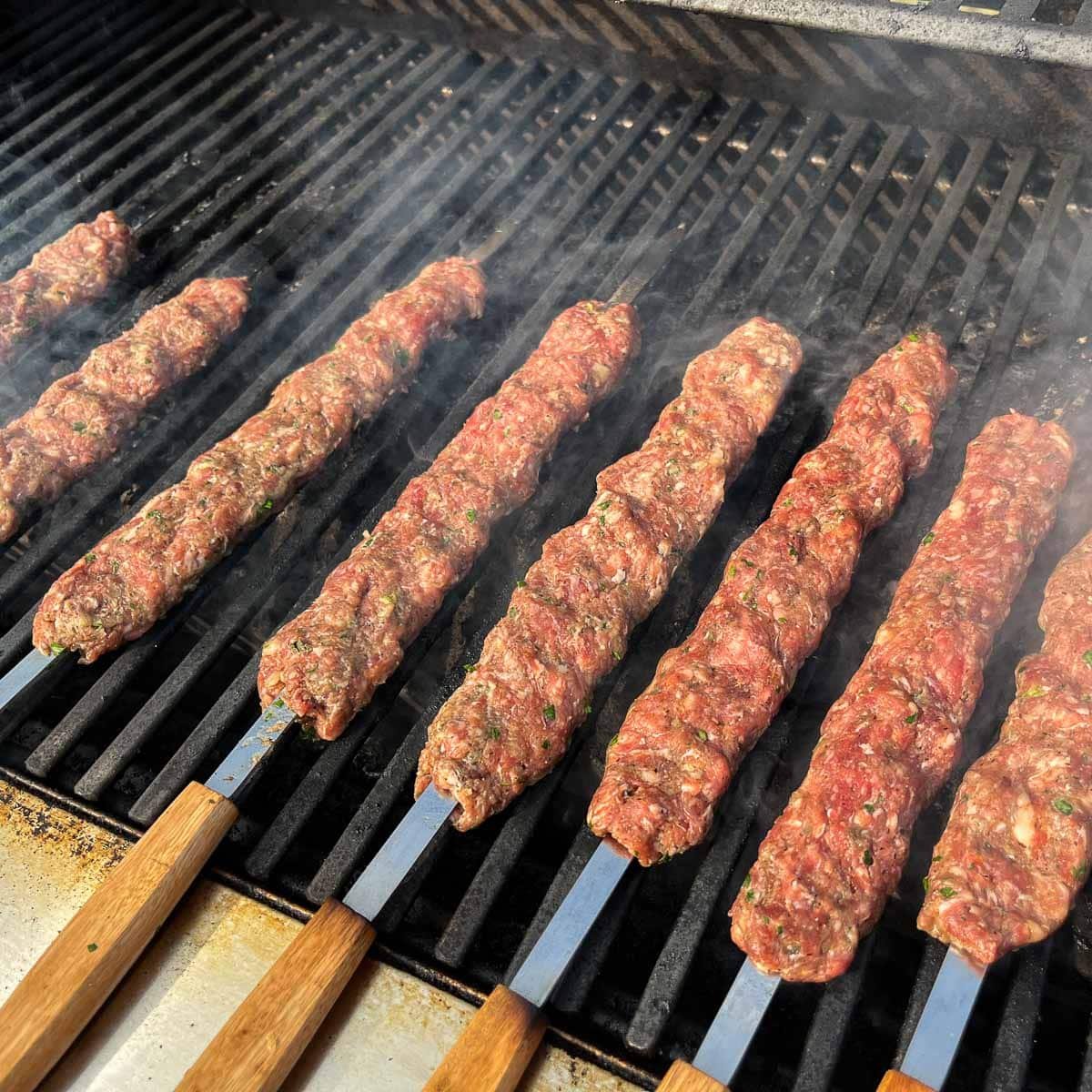


Note: If you don't have skewers to make kofta kebabs, just shape the meat into long, flat patties and grill the same way mentioned above. Once both sides are browned, remove them from the grill and tent with foil to keep them warm until ready to serve.
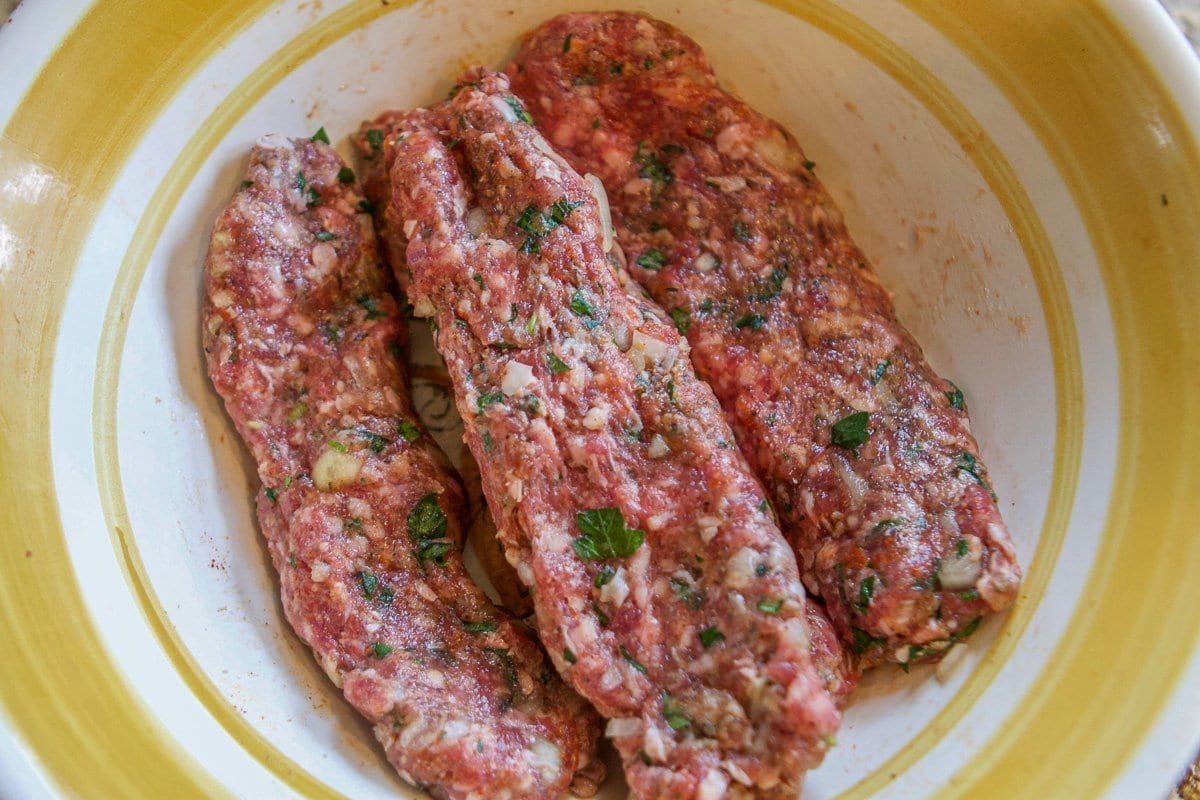

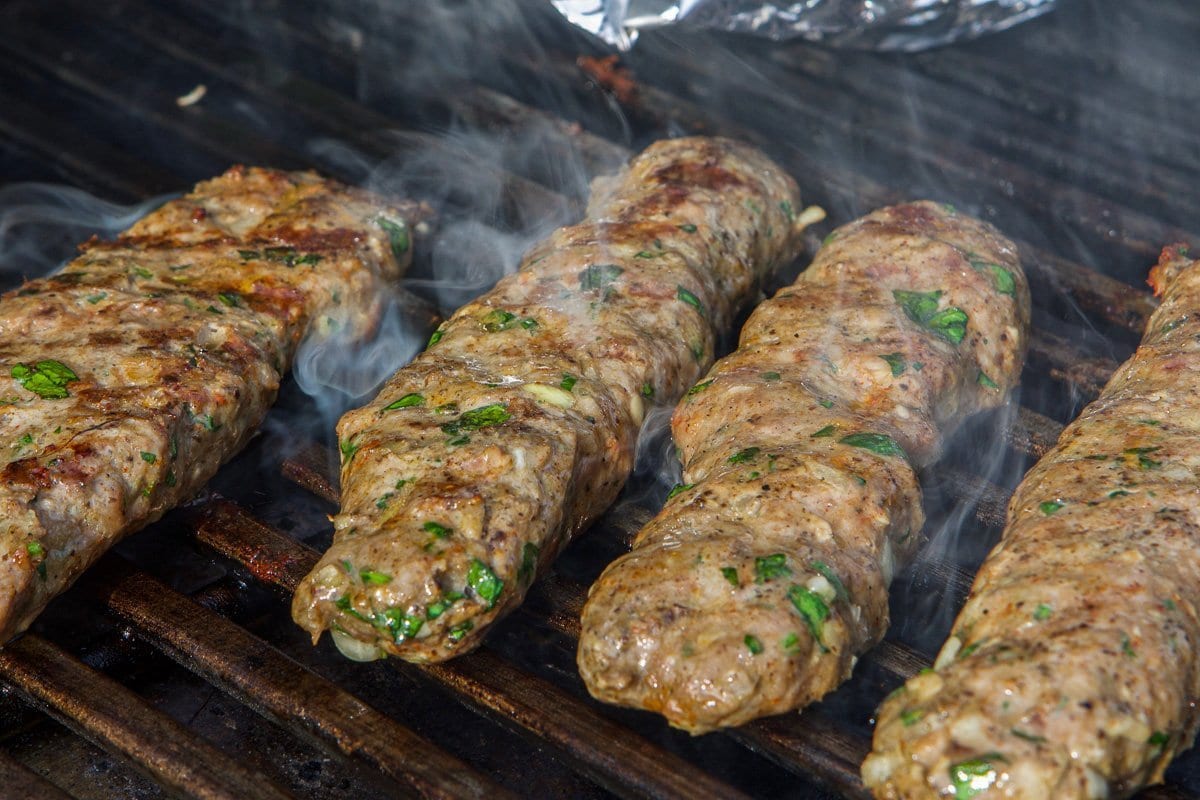
🍽 Serving Suggestions
Beef kofta kebabs are usually served with vermicelli rice, Middle Eastern bread, Lebanese Tabbouleh, and grilled vegetables. Additionally, garlic tahini sauce, Middle Eastern pickled turnips, and marinated sumac onions are often served on the side.
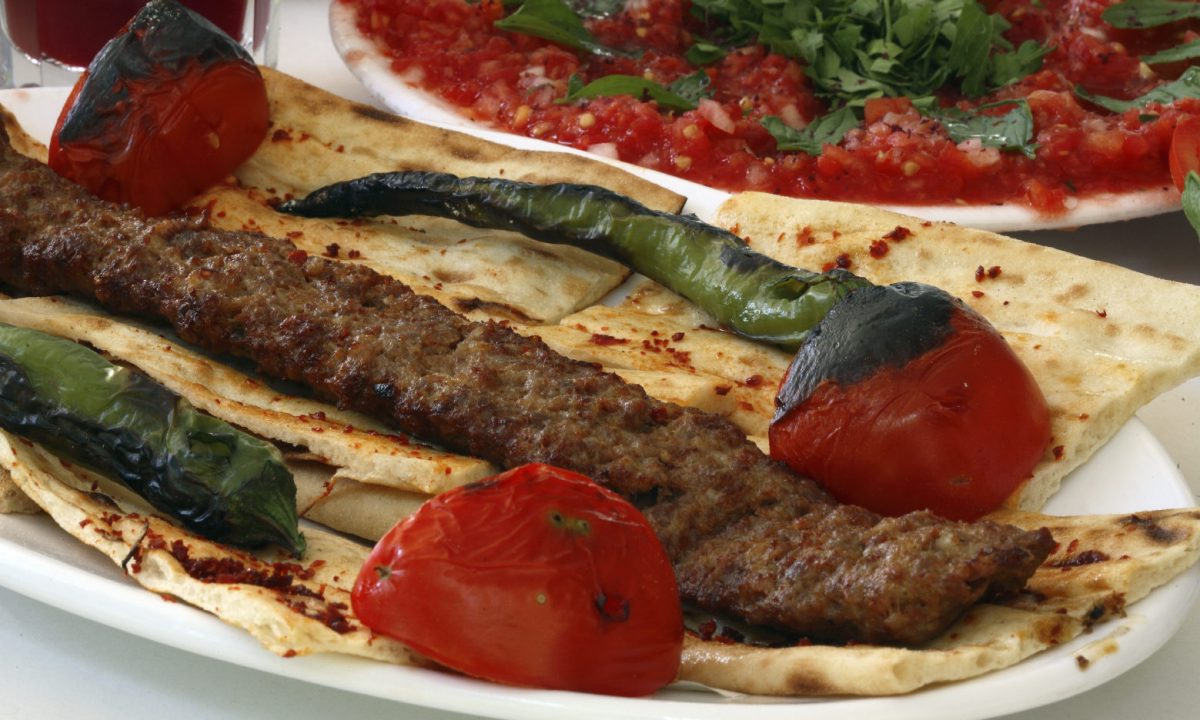
🤷🏻♀️ Recipe FAQs
kafta kabob meat is usually prepared with beef or lamb, or a combination of the two. Ground onion, parsley, and Middle Eastern spices are usually mixed into the meat mixture. Sometimes, eggs or bread crumbs are added as binders.
There are so many Middle Eastern dishes that you can serve with Kofta. The most obvious choice is basmati rice. However, pita bread, Lebanese hummus, tabouli, and lavash bread are all excellent options!
Kofta Kebabs freeze well! You can freeze them before cooking or after. To freeze leftovers, simply wrap them in plastic wrap or aluminum foil and store them in freezer bags.
To reheat kofta kabobs, place them on a dish and loosely cover them with a paper towel, then microwave them for approximately one minute. The exact time will depend on the wattage of your microwave. What if you don't have a microwave? You can reheat kabobs in a skillet, on the grill, in a toaster oven, or in an air fryer.
👩🏼🍳 Pro Tips
- This kofta kebab recipe will yield eight 12" kabobs or sixteen 6" kabobs.
- Using lean beef will result in tough kofta kabobs, so I don't recommend it!
- If your beef kofta kebabs stick to the grill, use a long metal spatula to carefully free them and flip them over.
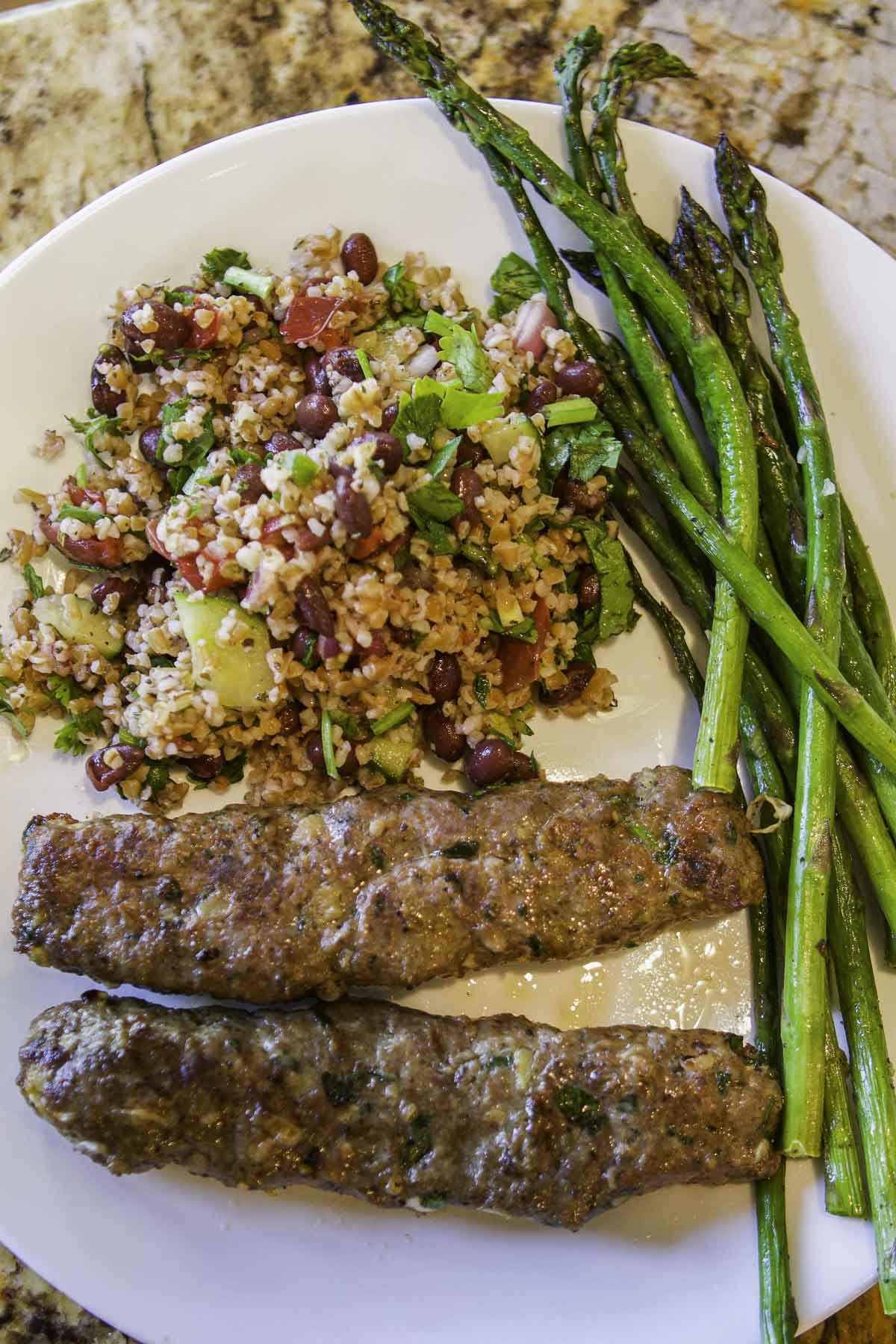
🥙 More Middle Eastern Recipes
If you enjoy this beef kofta kebab recipe, try these other Middle Eastern dishes!
📖 Recipe
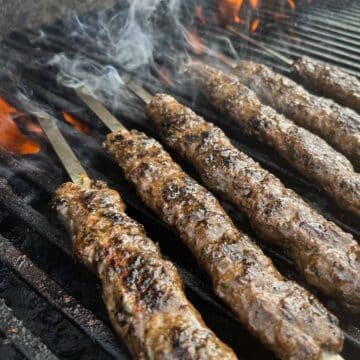
Kofta Kebab Recipe (Lamb/Beef)
Equipment
Ingredients
- 1 large onion
- ½ cup Italian parsley (or 2 tablespoon dried)
- 2 lbs ground beef (20% fat)
- 1 lb. ground lamb
- 1 tablespoon dried mint
- 3 teaspoon sea salt
- 2 teaspoon black pepper
- 1 tablespoon sumac powder
- ½ teaspoon ground allspice
- ¼ teaspoon groud cloves
- ¼ teaspoon cinnamon powder
- ½ teaspoon cayenne pepper (optional)
Instructions
- Place the chopped onion and parsley in a food processor. Pulse the food processor until finely ground. Strain the onion juice from the onion mixture and set it aside for later.
- Add beef and lamb to a large bowl. Top with the ground onions, season with salt, black pepper, sumac powder, allspice, cloves, cinnamon, and cayenne.
- Cover the bowl with plastic wrap and refrigerate for 4-6 hours, or overnight. When you're ready, take a handful of the kafta mixture and roll it into a log. Push a flat skewer through it and form the meat over the skewer.
Grilling Instructions
- Heat and oil the grill to keep the kabobs from sticking to the grates. Gently place the skewers on the grill and turn them over every minute or so to keep them from sticking. Cook for 3 to 4 minutes per side. Don't overcook or they will dry out.
- If you don't have skewers, just shape the meat into long, flat patties and grill the same way mentioned above. Once both sides are browned, remove them from the grill and tent with foil to keep them warm until ready to serve.
Notes
- Wetting your hands with the onion and parsley juice will not only flavor the kabobs but will keep them from sticking to your hands. If you prefer, you can use cold water instead.
- This recipe will yield eight 12" kabobs or sixteen 6" kabobs.
- Using lean beef will result in tough kabobs.
- If the kebabs stick to the grill, use a long metal spatula to carefully free them and flip them over.

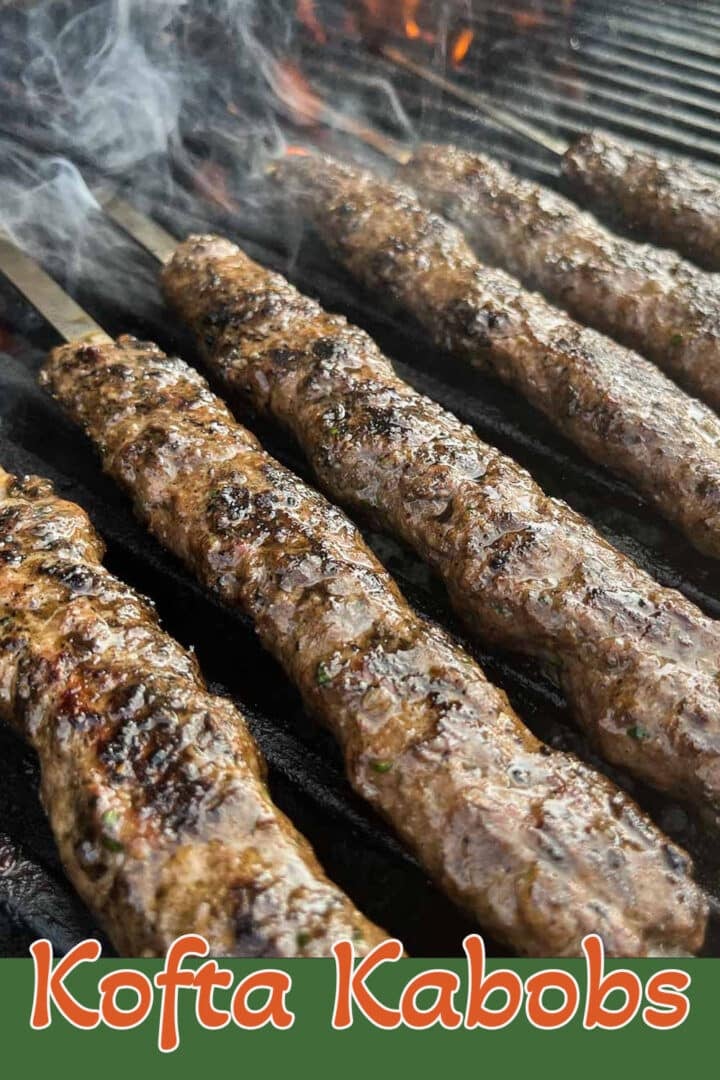
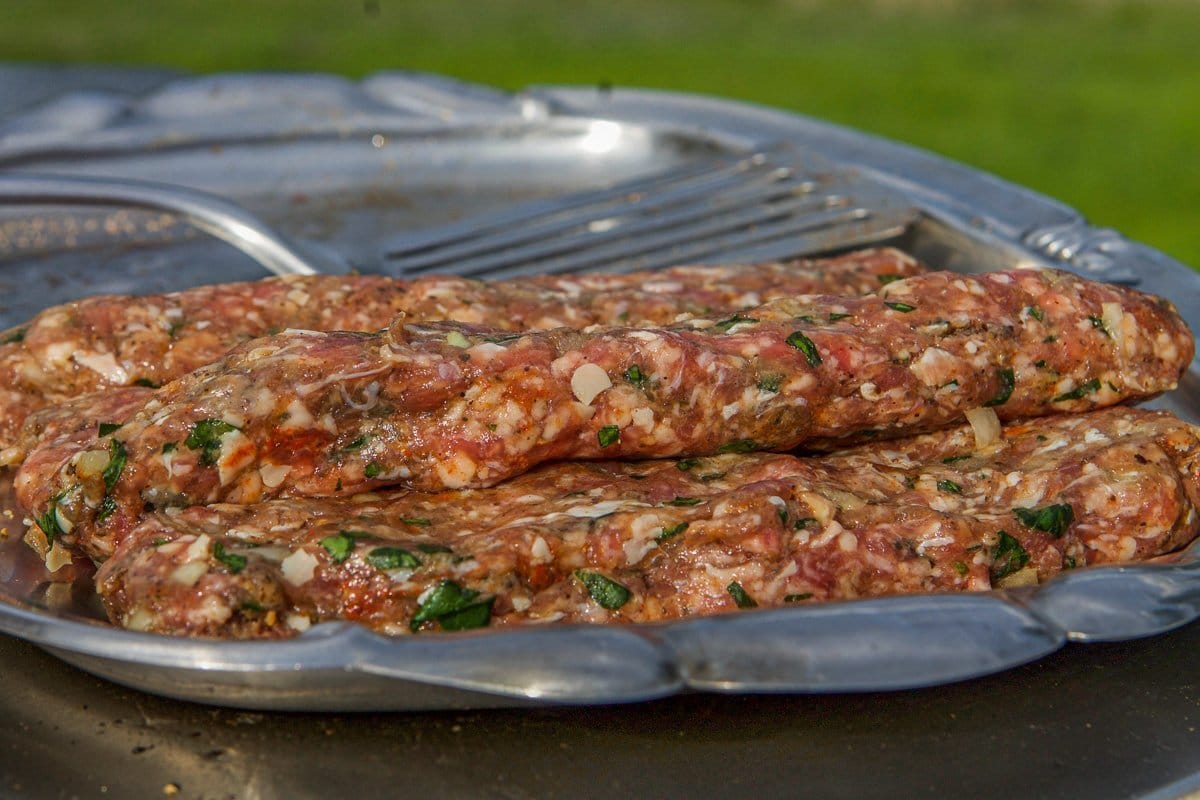


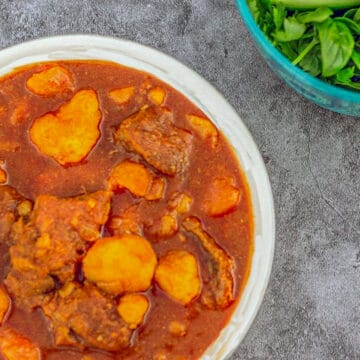
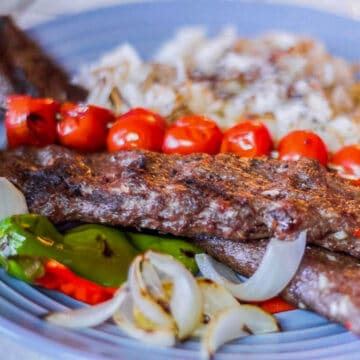
Brenda says
What is the purpose of refrigerating the meat after it is mixed?
Hilda Sterner says
Hi Brenda, you want the flavors to develop like you would when marinating meat or chicken. The meat is also easier to handle and will adhere to the skewers easier if it's chilled.
Candice says
This recipe is amazing. However I’m dying to know the recipe for that salad you have in the picture on the side. It looks so yummy and a perfect compliment to the Kofta. Any chance I can get that recipe? Thank you!
Hilda Sterner says
Hi Candace, Thank you so much for the comment/review and so glad you enjoyed the recipe. I had to go back to the picture to remember which salad you were referring to. It's been a while, but I believe I added some leftover black beans to my Tabouli Salad recipe.
Tiffany says
Hi Hilda,
I just stumbled on your website and I am in love with all of your recipes! Thank you so much for sharing. I am Assyrian and since the quarantine I have been missing home cooked food so much so these recipes are giving me some great ideas. I just made cadeh for the first time last weekend. Okay on to my question, I wanted to know if I would be able to cook these in a oven? I do not have a grill.
HildaSterner says
Hi Tiffany,
Thank you so much, I'm glad you found me! I've never cooked them in the oven, but I don't see why not. But broiling them might be an even better option. You don't want to overcook them and dry them out. You can also fry them in a pan. Good luck!
Waylon says
If I were to use your BAHARAT recipe for the seasoning, how much would you use and would it replace all of the herbs in the recipe?
HildaSterner says
Hi Waylon,
It really depends on the recipe you're making. I would start out with 1 teaspoon per one pound of meat, as an example. I wouldn't say that it would replace all the herbs in the recipe either. For instance, if you were using it in kabobs, you can still add some chopped parsley or dried mint. I would experiment with it first to see if you like the flavor and go from there. You can always adjust the amount by adding more, but if you add too much it might be overpowering. I hope that helps!
KHarris says
I have never heard of these before but they sound really neat! Might have to give them a try!
HildaSterner says
Thanks for the comment, Kristin! I guess the fact that you haven't tried kofta kebabs is one of the reasons why I love to blog. I love introducing new foods to others. Hope you give the recipe a try and let me know what think. It can easily be made with only beef. The key is to keep it pretty fatty; dry kebabs are not very tasty. Since you're on Keto that shouldn't be a problem, right? Enjoy!
Tereasa Brooks says
Is this pronounced like Kurfda? I lived in Turkey for a little while when I was younger and we used to eat kurfda all the time. I've tried to find a recipe for years. I am going to try it but it's been so many years I probably don't even remember what it really tastes like, lol! It's a favorite memory of mine and that's saying a lot as these days I don't remember a whole lot!
HildaSterner says
Hi Tereasa, thanks for your comment! To answer your question, I wouldn't
t be surprised if it was pronounced differently in Turkey. I'm Assyrian, and we pronounce is "Koofta" Do you recall how it was cooked? Was it grilled or fried in a pan? There is another recipe called "kitlehteh," which are football-shaped meat patties, that are usually fried in a pan. Also, I can relate to the memory comment! 😉